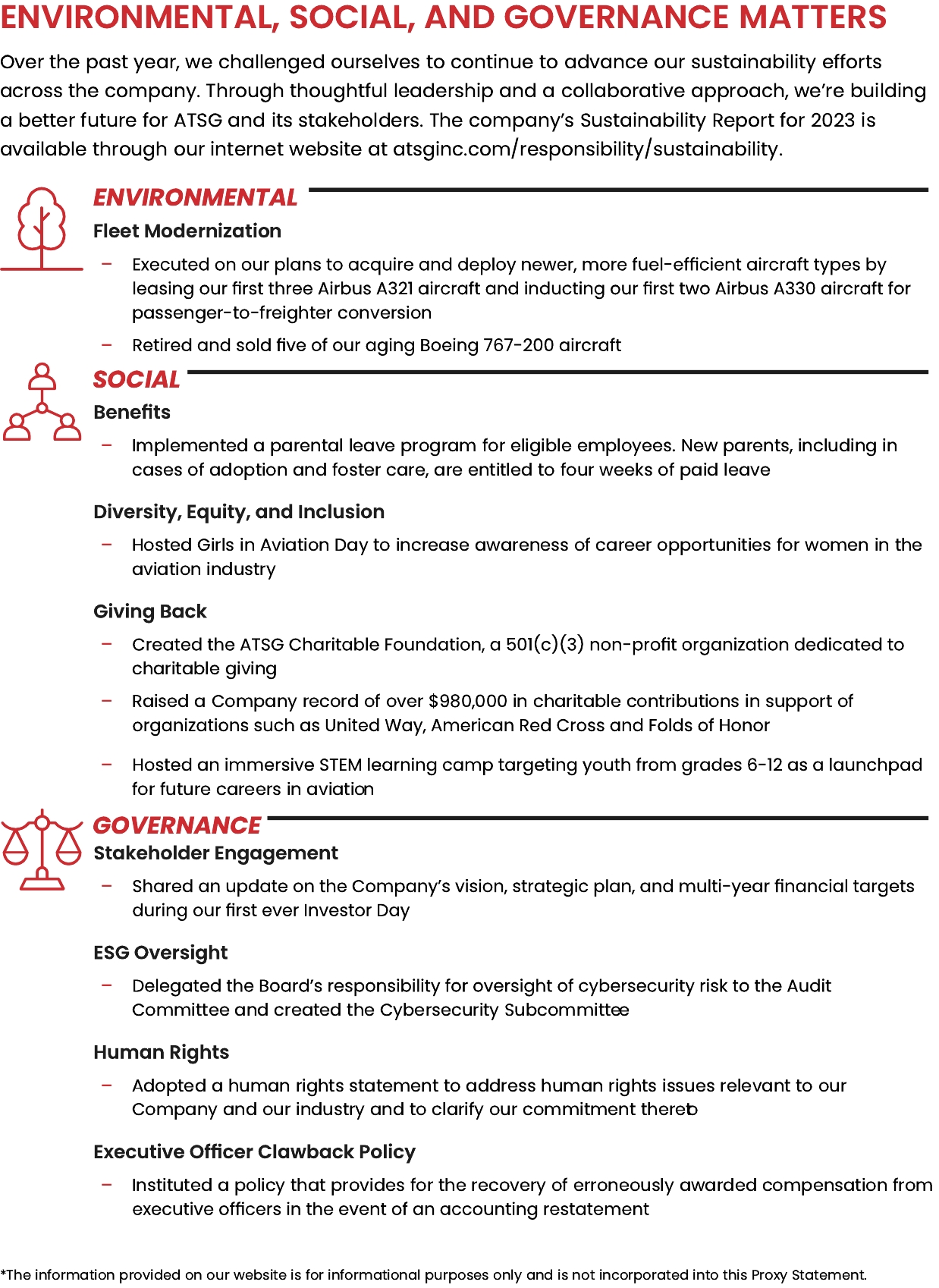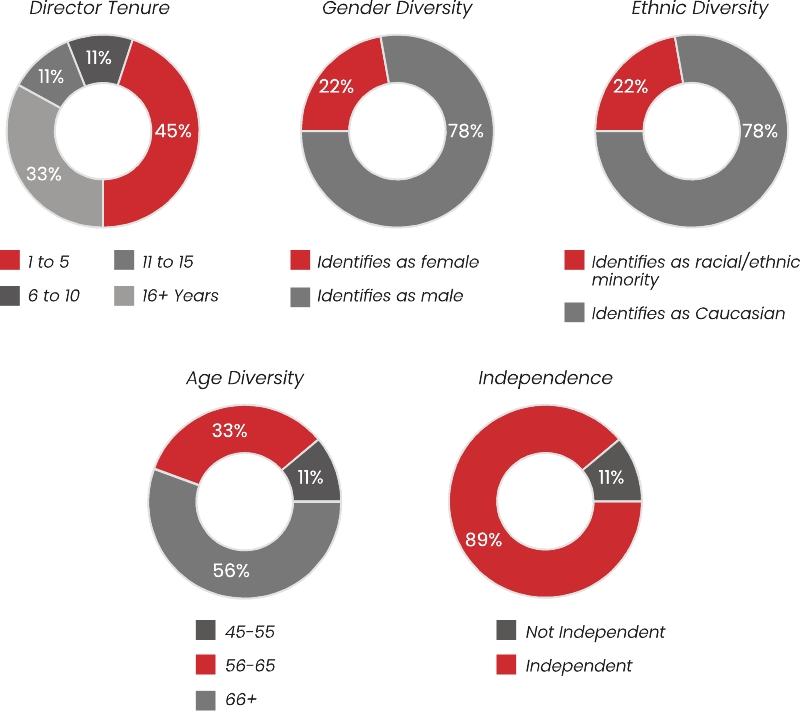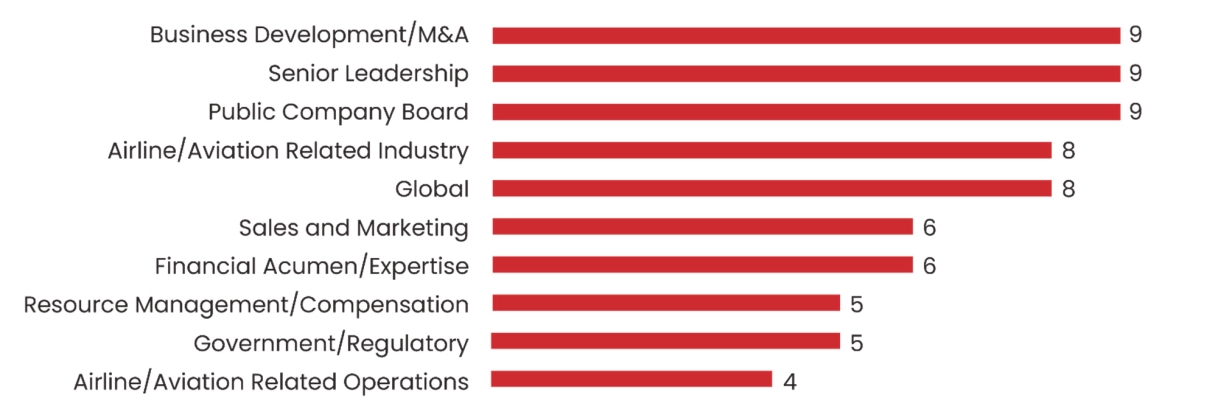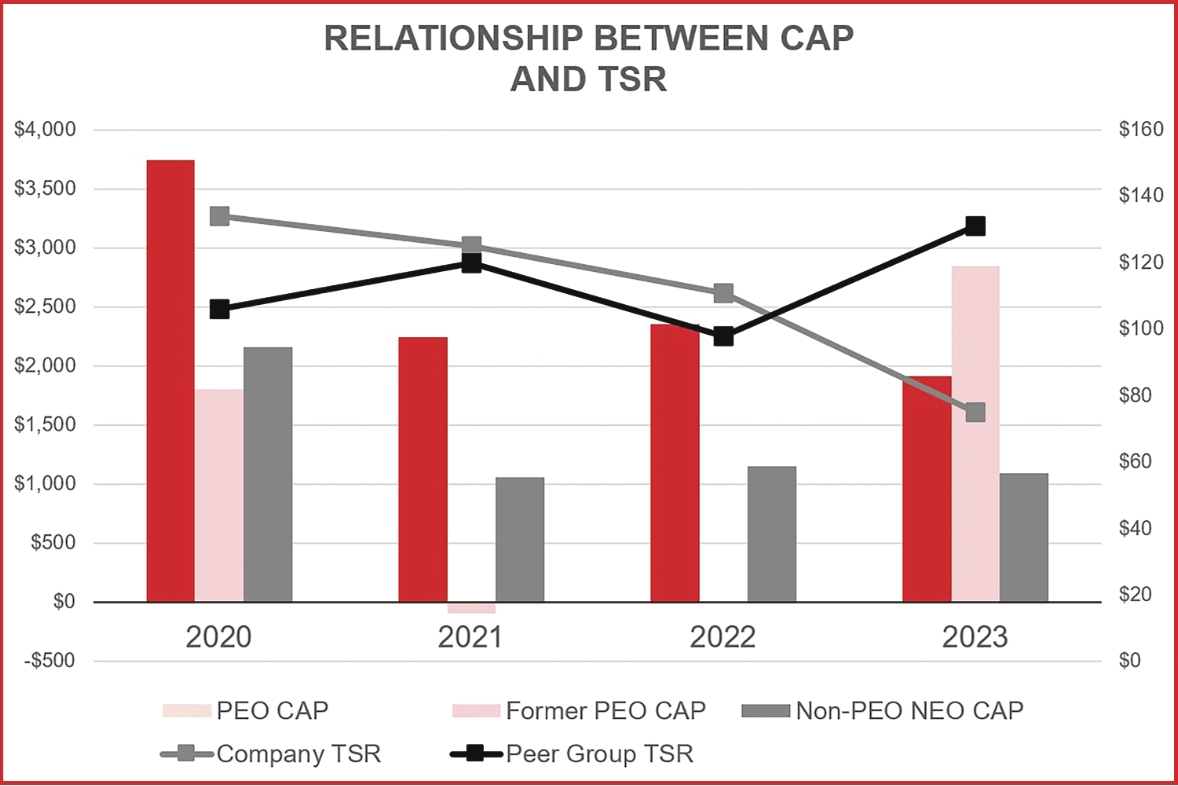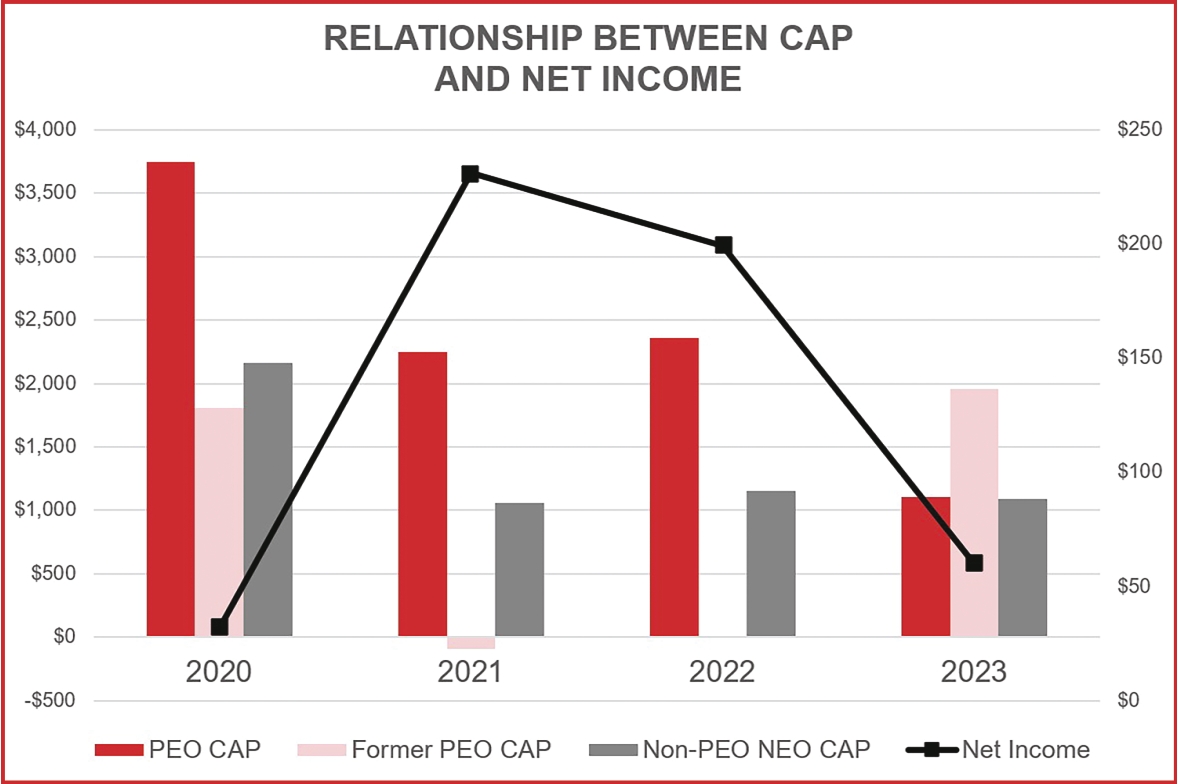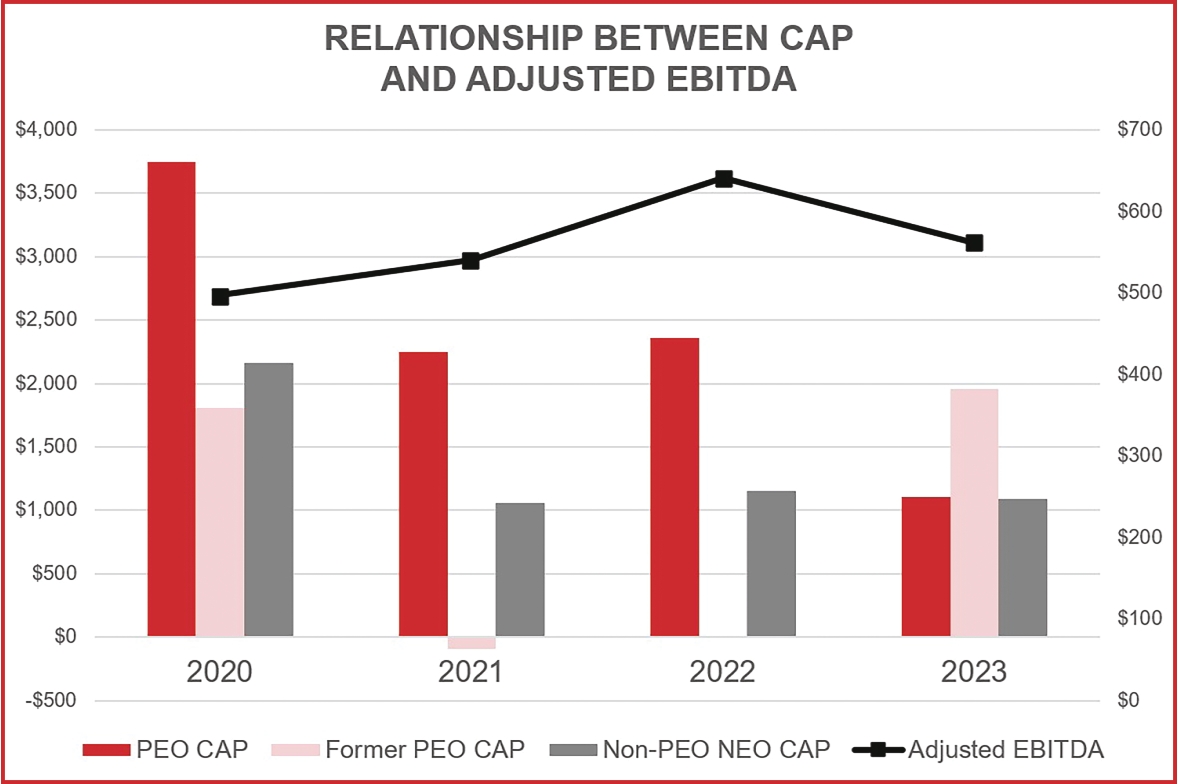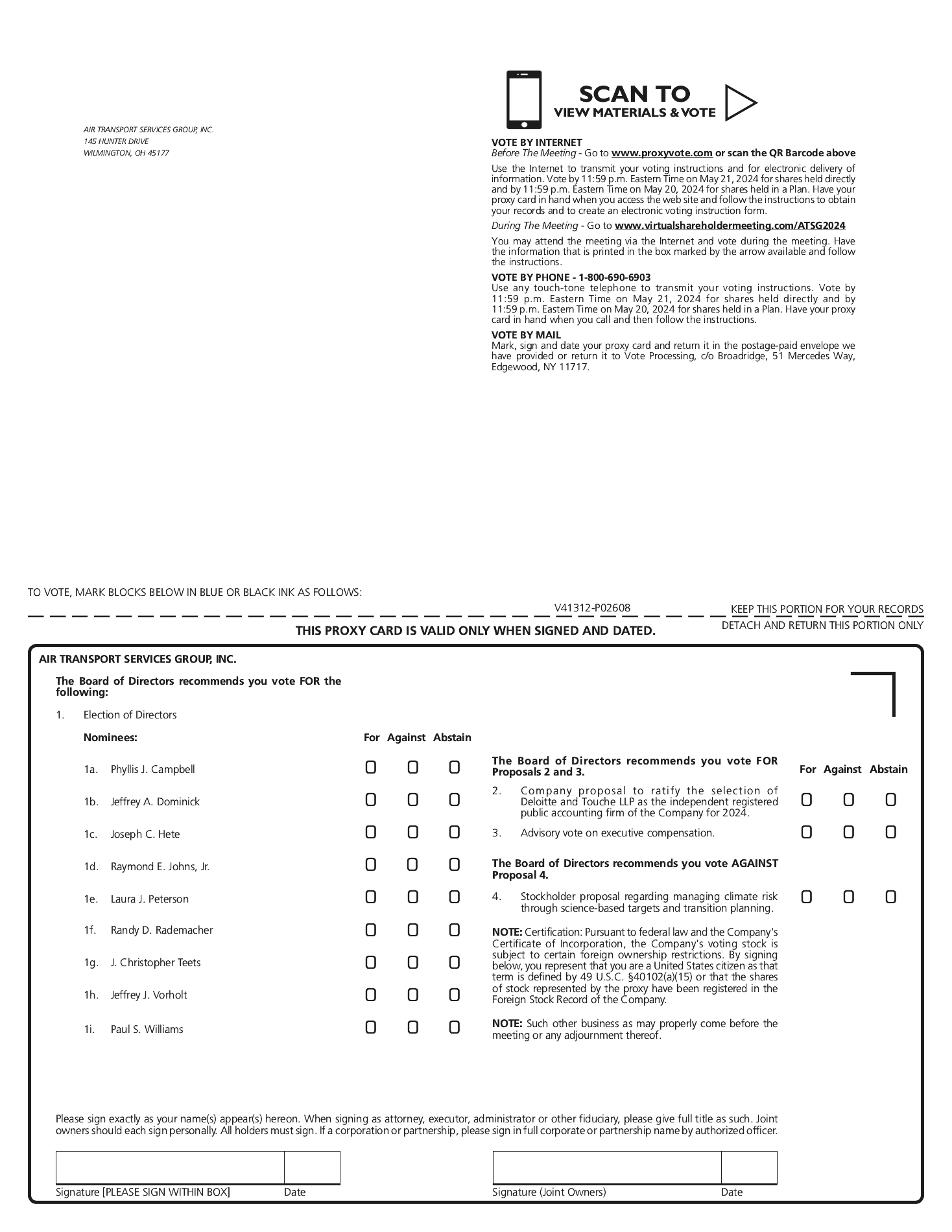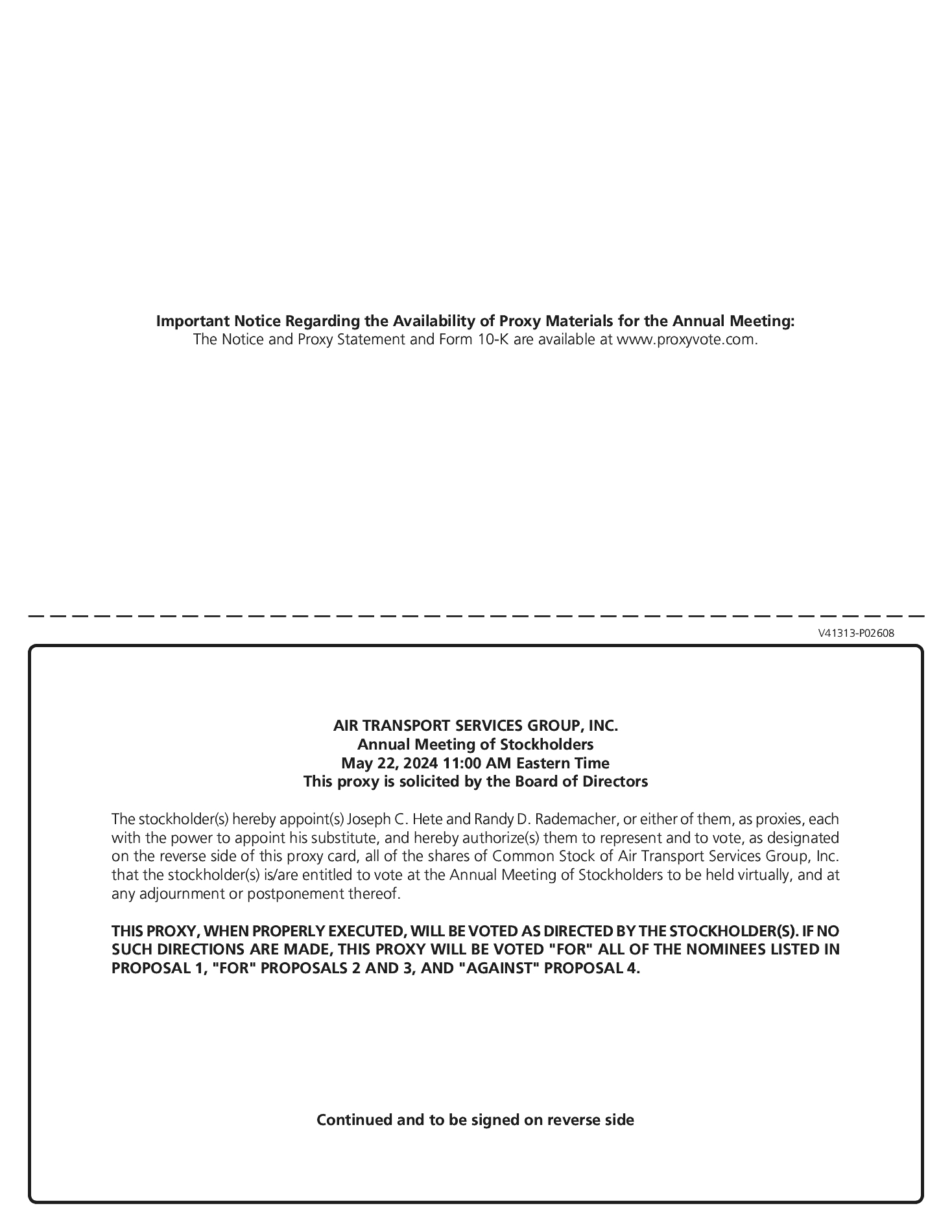3. What if I have technical or other “IT” problems logging into or participating in the Annual Meeting webcast?
We have provided a toll-free technical support “help line” that can be accessed by any stockholder who is having challenges logging into or participating in the virtual Annual Meeting. If you encounter any difficulties accessing the virtual meeting during the check-in or meeting time, please call the technical support line number that will be posted on the Virtual Shareholder Meeting login page at www.virtualshareholdermeeting.com/ATSG2024.
4. What is a “proxy?”
A proxy is a person or entity authorized to act for another person. In this instance, the Board of Directors has appointed a Proxy Committee to vote the shares represented by proxy forms submitted by stockholders to us prior to the Annual Meeting. Giving the Proxy Committee your proxy means that you authorize the Proxy Committee to vote your shares on your behalf at the Annual Meeting as you specifically instruct on your proxy card for each proposal, or if a matter that is not raised on the proxy card comes up for a vote at the Annual Meeting, in accordance with the Proxy Committee’s discretion.
5. Whom am I appointing as my proxy?
The Proxy Committee consists of Joseph C. Hete, our Chairman of the Board and Chief Executive Officer, and Randy D. Rademacher, our Lead Independent Director.
6. What is a Proxy Statement?
The document you are reading is a Proxy Statement. It is intended to provide our stockholders with information necessary to vote in an informed manner on matters to be presented at the Annual Meeting. It is sent in conjunction with a solicitation of your proxy.
7. Why did I receive more than one Proxy Statement or proxy card?
You may receive more than one Proxy Statement or proxy card if you hold our stock in different ways (e.g., joint tenancy, in trust, or in a custodial account) or in multiple accounts.
8. Why are you soliciting my proxy?
The Board of Directors is soliciting your proxy to vote at the Annual Meeting because, at the close of business on March 25, 2024, the Record Date, you were: (i) a “stockholder of record,” which means that you were shown on our records as the owner of our common stock, or (ii) the beneficial owner of shares held in “street name.” All stockholders of record are entitled to vote at the meeting. It is important that as many stockholders as possible vote on the issues to be decided at the Annual Meeting. The process of soliciting proxies is intended to increase the number of stockholders who vote on those issues. In addition, stockholders who vote by proxy are deemed to be in attendance at the meeting for purposes of determining if there is a quorum.
9. What is the difference between a “stockholder of record” and a beneficial owner of shares held in “street name?”
Stockholder of Record. If your shares are registered directly in your name with our transfer agent, Computershare Investor Services, LLC (“Computershare”), you are considered the stockholder of record of those shares.
Beneficial Owner of Shares Held in “Street Name”. If your shares are held in an account at a bank, broker or other institution, then you are the “beneficial owner” of shares held in “street name.” The entity holding your account is considered the stockholder of record for purposes of voting at the Annual Meeting. As a beneficial owner, you have the right to instruct that entity on how to vote the shares held in your account.
10. How do I obtain voting instructions if my stock is held in “street name?”
If your stock is held in “street name,” you will receive a notice, typically entitled “Voting Instruction Form” or something similar, either electronically or by mail from the bank, broker or other institution holding your stock. This notice contains instructions regarding how to access the proxy materials and how to direct your bank, broker or other institution that is the holder of record to vote the shares for which you are the beneficial owner.
11. If I hold my stock in “street name” and fail to provide specific voting instructions to the bank, broker or other institution holding it on my behalf, will my stock still get voted?
Not on all matters. If you hold your shares in “street name” and want a vote to be cast on your behalf for all proposals described in this Proxy Statement, you must submit your specific voting instructions to the bank, broker or other institution holding the stock on your behalf in response to the notice you receive from it.









